How ‘la grande dame’ of the natural wine movement wins over consumers and growers
Born on a mixed-use farm in the Cognac region, where she learned to prune the vines and pick the grapes her parents grew for France’s famous brandy, Isabelle Legeron was bound to end up in the world of wine. However, now one of the global leaders of the natural wine movement, she initially pursued a career in media that brought her to the UK in the 1990s, where she has lived ever since.
But when you are born into it, the wine jitters never go away and put Isabelle back on track.
With a Masters of Wine diploma in her pocket, Isabelle knows as much about big, industrial, branded wines as about their artisanal, organic, small-batch cousins.
Her book about natural wine – the third edition is out –, as well as her quest for transparency and her inclusive and candid demeanor has opened the eyes of wine drinkers and makers alike. She is also the driving force behind the RAW WINE fairs.
With the Scandinavian countries being among the early adopters of natural wine, it is time to catch up with her on all the latest. Due to coronavirus measures the conversation took place over the phone.
Tastemarkers
‘Making natural wine is simple and complex at the same time,’ Isabelle says. ‘The most important parameter by far is to have impeccable grapes. If they are healthy, the need to intervene in the winemaking process is much lower.’ Except for an occasional smidgen of sulphite at bottling, no additives or mechanical maltreatments are required. Isabelle is clear; in the vineyard organic farming is a minimum requirement. ‘Wine is a lifestyle and a luxury product. Grapes aren’t a basic need. So, we, the consumer, have the possibility to be critical as to what we put in our bodies.’
For the untrained drinker, the question is if there is a way to recognize natural wines once they are bottled. Are there any tastemarkers? Isabelle explains: ‘I quite literally look for aliveness in the wine. A wine that is alive is full of energy and evolves in the glass. I also look for authenticity of flavours and textures. I am not interested in flavours that are derived from the winemaking process; I want aromatic honesty. I also look for terroir expression. But even if the wine doesn’t come from a great terroir, the farming needs to be sensitive enough to let the vine express where it is from. I want the wine to give me a sense of place.’
Uphill battle
Sulphite, the most contentious additive that kills bacteria and increases a wine’s shelf life, is the only one that needs to be mentioned on the label in most European countries. However the IOV, the International Organisation of Vine and Wine, allows eighty additives to be used in winemaking. The entire food industry is required to mention all ingredients on the label, but wine isn’t. ‘Why does the wine industry get away with this?’ Isabelle wonders. ‘It is a huge competitive disadvantage for natural winemakers.’ Nonetheless, Isabelle is optimistic pressure from consumers could force policy makers to update their stipulations.
But the mills of change grind slowly and the lobby to maintain the status quo is strong. In the immediate future she doesn’t expect any noteworthy reforms. Her quest for transparency is an uphill battle, but she doesn’t tire in forging ahead.
A natural wine designation
Meanwhile, in her home country, a group of natural winemakers, led by Jacques Carroget of Domaine La Paonnerie in the western Loire Valley, has taken the law into their own hands and founded the Syndicat de défense des vins naturels. For a year now, the Syndicat has created a natural wine designation with two labels natural winemakers can use in their communication to the consumer and the trade – if they meet certain criteria, obviously. All wines must be made from hand-harvested, certified organic grapes and be fermented with ambient yeasts. Additives and the use of intrusive or ‘brutal’ techniques, such as the spinning cone or reverse osmosis, aren’t permitted. The difference between the two labels lies in the use of sulphites. One label is for wines with absolutely no added sulphite. For growers who add up to a maximum of 20mg/l at bottling there is a separate label. Isabelle welcomes the initiative of the Syndicat, but would like to see it expand to other countries like Spain and Italy. She also worries about the effectiveness of the control mechanisms. ‘It is impossible to detect if sulphite is added at bottling or before. And when the group of affiliated vintners grows, the relative number of checks is bound to decrease. So, it’ll come down to trust.’ However, trust is good, but verification of the requirements is better. The only thing is, every test adds to the overall cost of the wine – costs that conventional winemakers don’t have to make. For the same reason the use of pesticides isn’t scrutinized as closely as Isabelle would like. Nonetheless, she applauds the Syndicat’s initiative as another way of creating transparency.
RAW WINE London
The RAW WINE fairs
Transparency is also one of the pillars supporting the RAW Wine fairs, currently Isabelle’s most important professional activity, despite this year’s cancellations due to the coronavirus. Started in London in 2012, there are now sister fairs in Berlin, New York, Toronto, Montreal, Los Angeles and Miami. London’s 2020 edition would have seen more than hundred and fifty exhibitors. What is striking is the absence of Paris. France after all, is a hotbed of natural winegrowers and Isabelle herself is French. She chuckles when I ask her about it. ‘There are already a number of natural wine fairs in France. Moreover, the French are more focused on their own wines, while I showcase wines from all over the world. Nonetheless, Paris is on the books, but coronavirus forced me to put my plans on ice.’
Each grower participating in the RAW Wine fair has to provide information about how the wines are made, to ascertain the wines are justly qualified as natural. Openness and transparency are essential to Isabelle, but she is also inclusive. She is lenient to those growers who are in the process of transformation. Total sulphite (naturally occurring and added), for instance, are permitted up to a generous 70mg/L. ‘Growers who may not be completely natural yet, learn from others at the fair,’ she explains. ‘When they return a year later they have often made big strides. By allowing them to the fair I support them and progress is made faster.’
Millenials
In Norway urbanites and millennials are the early adopters of natural wine. Even on a casual Tuesday, they seem to prefer to buy a typically higher priced bottle of natural wine than a cheaper conventional one. ‘It is a trend I recognize,’ Isabelle confirms. ‘The vast majority of our visitors are between 25 and 45 year old and within that range, the 25 to 35-year-olds are overrepresented. Most of them live in the metropolitan areas of the cities where we present our wines. This generation is not necessarily rich, but they care about where they spend their money. They value honesty, they want to know the story behind the wine, they ask questions, they have strong ethics, and they value people who know their craft and respect their environment.’
This is partly why fairs like RAW are so important for the natural wine movement. It creates an opportunity for consumers and trade to interact directly with the winemakers. It does, unfortunately, also create a travelling circus of people and bottles with a matching carbon footprint. It is something Isabelle has given a lot of thought to, she says. ‘I am working on a tasting notes app, so that we don’t have to provide handouts, thus saving on paper and printing. It is an illusion though to think natural winemakers can survive without the fairs. As you see in Norway, consumers and traders mostly live in the major urban areas, while the vintners predominantly live in rural parts. The fair is where they meet. Although now there are growers who could sell their stock twice over, all of them need to be able to share their story. People want to look the growers into the eyes and understand why they make the wines they make. None of them would be able to survive if they could only sell their wines locally.’ For Isabelle, the best way to contribute to a lower footprint right now is to promote lighter bottles. Having the fair in eight cities also helps prevent consumers and trade from travelling long distances to visit.
Advice for sommeliers
To a certain extent, fairs like RAW are preaching to the choir. Conversion takes place elsewhere, for example by word of mouth or through a positive experience in a restaurant. Expectations around natural wine are still thwarted by the idea that all natural wines are faulty. The weight of informing and convincing the consumer often falls on the shoulders of the sommelier. Isabelle, who consulted at restaurants from the Maldives to the Caribbean, has some advice. ‘First and foremost the sommelier needs to believe in the product. Selling a wine that you don’t like, natural or conventional, is seldomly convincing. I revamped the wine list at Claude Bossi’s previous restaurant, two-starred Hibiscus. Claude’s cooking is delicate, but also daring and adventurous, but the wine list was conventional with many wines made through high extraction and the use of new oak. It didn’t really match the cuisine, but it’s what the well-heeled customer wanted. I have changed the list gradually and made sure there is always enough choice for those who want to stick with the iconic wines, like Bordeaux’s First Growths. Including some natural wines in the wine pairing can be a way to demonstrate the quality of natural wines. However, most important is that the sommelier tells the story behind the wine. What is the grower’s philosophy, what is he or she aiming for? People need to be able to relate to it.’
Consumer power
Although sales are still less than 1 per cent of all wine sales, natural wines attract a lot of attention, but the real buzz is slightly fading. Even among growers that Isabelle may still consider conventional, many have shifted towards higher levels of sustainability and lower intervention. The perceived dichotomy between natural and conventional is more of a gliding scale. ‘What is sustainable anyway?’ Isabelle asks. ‘I know a winery in Chile, Herrera Alvarado, that has created a completely closed ecological circle; the winery generates no waste at all. There are few wineries who have taken it to such an extreme, although many are aiming for it.’ Fully natural wines will remain a niche market, but by now a more established one, with a positive impact on the wine industry at large. Criticism that all natural wines are faulty has become much less common than fifteen years ago. Nonetheless, with a good Anglo-Saxon sense of how the market works, Isabelle calls on the Norwegians to use their consumer power to keep on pushing for further change. The transparency she strives for will help them make informed choices.
RAW WINE Fairs Agenda
RAW WINE Talks, series of podcasts on RAW WINE’s website.
At home Isabelle drinks wines that are made naturally with up to 30ppm (parts per million) total sulphite, but the vast majority is made without any added sulphite or other agents. Some of her go-to growers are Gut Oggau, Les Vins du Cabanon, Alexandre Bain, Lentiscus, Lorenzo Corino.
A version of this article (in Norwegian) was published in the February 2021 issue (print) of Apéritif magazine.
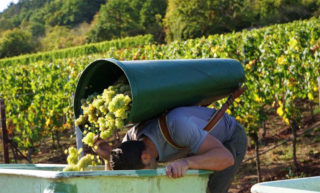
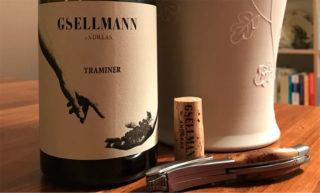
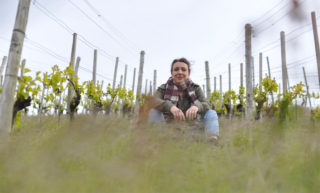
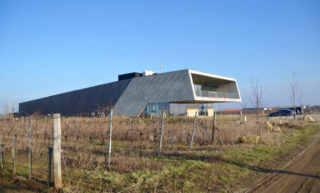

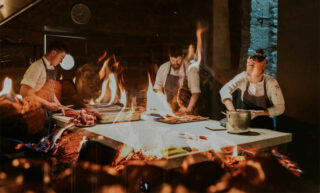


Comments